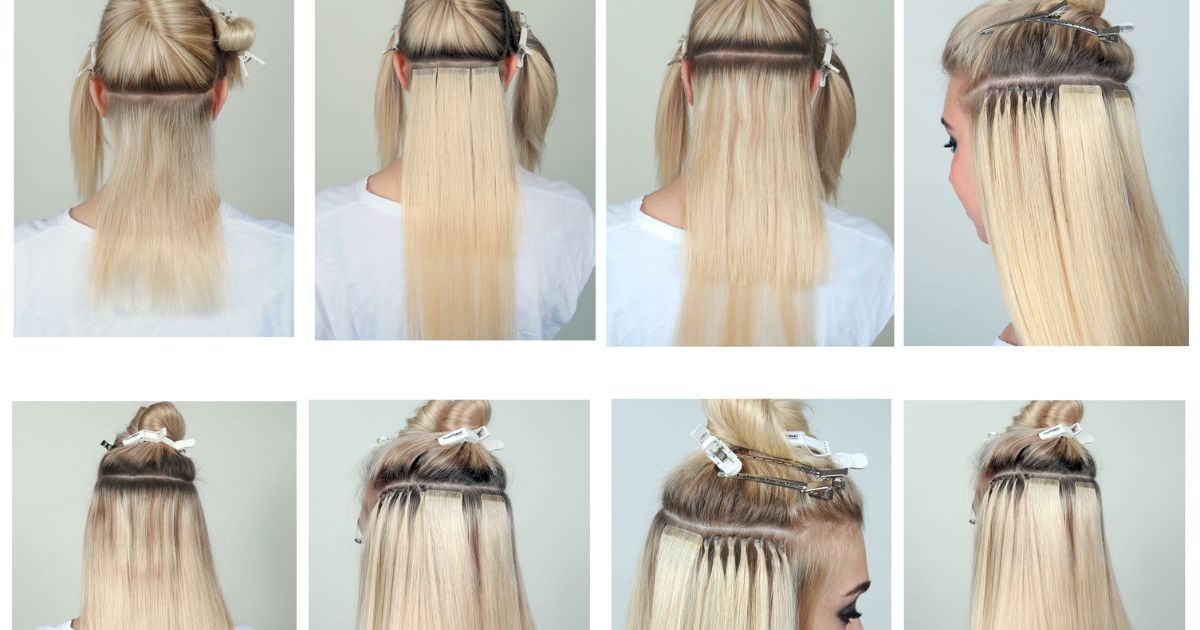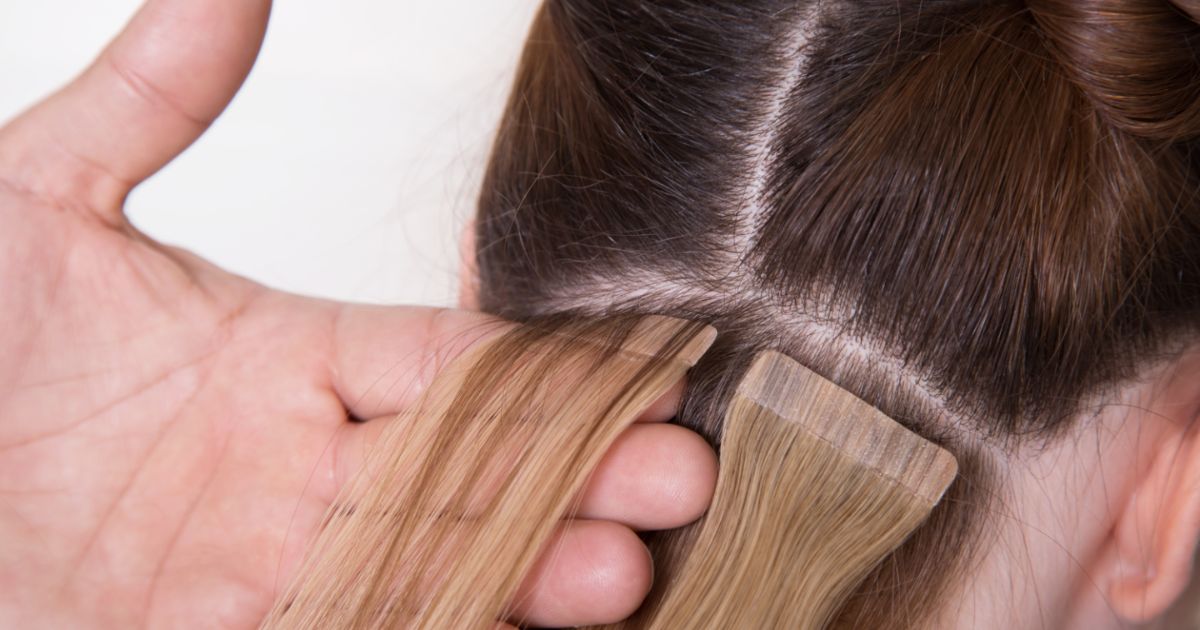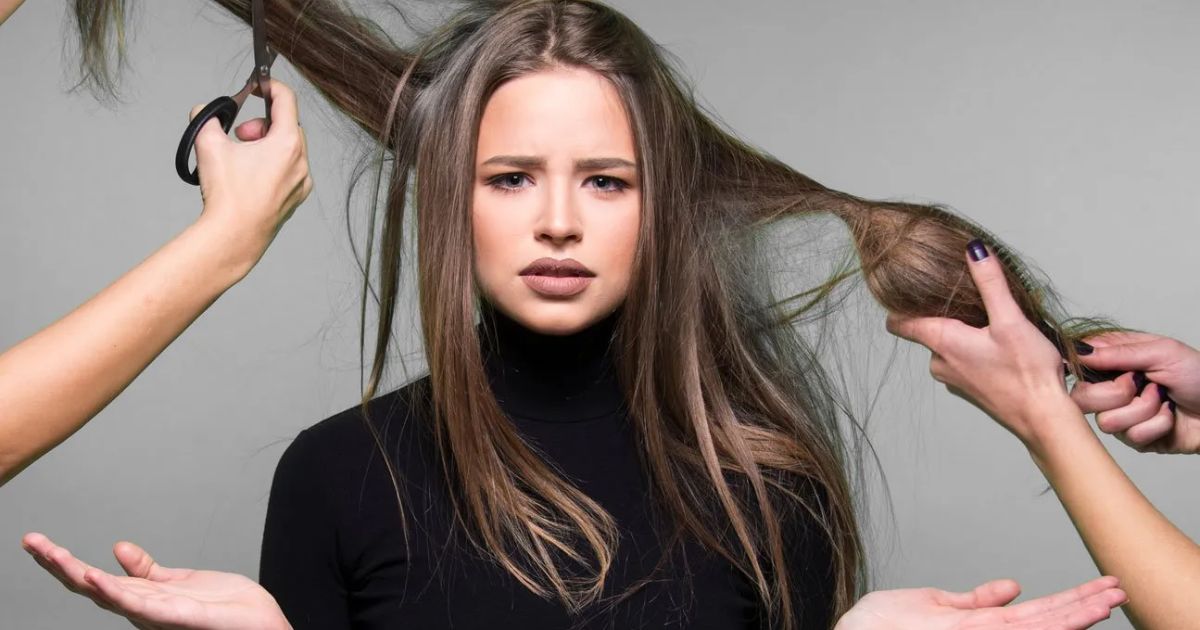Are you tired of your thin hair preventing you from achieving the voluminous look you desire? Look no further! In this expertly crafted article, we will guide you through the art of hiding hair extensions in thin hair. Discover the secrets to selecting the perfect extensions, creating a flawless blend, and maximizing volume. With our detailed instructions and professional advice, you’ll be able to confidently embrace a luscious mane that will leave you feeling like you truly belong.
Key Takeaways
- Choose lightweight extensions designed for thin hair
- Establish a solid base for the wefts to prevent slipping
- Identify the safe zone for extension placement based on hair length
- Position the wefts strategically for a seamless blend with natural hair
Choosing the Right Extensions for Thin Hair
When selecting hair extensions for thin hair, it is crucial to consider the type and quality of the extensions to ensure optimal blending and natural-looking results. Thin hair requires extensions that are lightweight and specifically designed to add volume without causing damage. Look for extensions made from high-quality human hair, as these will provide the most natural appearance and are easier to style and maintain.
Consider the method of attachment. Clip-in extensions are a great option for thin hair as they can be easily applied and removed without causing strain on the hair follicles. It is also important to choose extensions that match your hair color and texture to achieve a seamless blend. By carefully selecting the right extensions, you can enhance your thin hair and achieve the desired fullness and length while maintaining a natural look.
Creating a Solid Base for the Wefts
To ensure a secure and undetectable installation, it is essential to establish a sturdy foundation for the hair extension wefts. Creating a solid base for the wefts is crucial for both the comfort and longevity of the extensions. Start by sectioning the hair horizontally, about an inch above the nape of the neck. This will create a secure anchor for the wefts. Next, tease the hair at the root to add volume and grip. This will prevent the extensions from slipping and sliding.
Consider using a hair extension adhesive or tape to further secure the wefts. By creating a solid base, you can ensure that your extensions will blend seamlessly with your natural hair, giving you the confidence and belonging you desire. Now let’s move on to finding the safe zone for extension placement.
Finding the Safe Zone for Extension Placement
For optimal results, it is crucial to carefully identify and select the appropriate safe zone for the placement of hair extensions in thin hair. This safe zone is where the extensions can be seamlessly blended with natural hair, ensuring a natural-looking and comfortable result. To help you in this process, here is a table showcasing the safe zone based on different hair lengths:
| Hair Length | Safe Zone |
|---|---|
| Short (above shoulder) | Around the ear and nape area |
| Medium (shoulder-length) | From the crown to the nape area |
| Long (below shoulder) | From the top of the head to the ends of hair |
Positioning the Wefts for a Seamless Blend
Placing the wefts strategically is crucial for achieving a seamless blend when hiding hair extensions in thin hair. Here are three key tips for positioning the wefts effectively:
- Start by sectioning off your hair: Divide your hair into horizontal sections, starting from the nape of your neck and working your way up. This will ensure even distribution of the extensions and prevent any gaps or unevenness.
- Attach the wefts closer to the scalp: To create a natural look, place the wefts as close to the roots as possible. This will help conceal the extensions and blend them seamlessly with your natural hair.
- Layer the wefts for a natural look: Instead of attaching all the wefts in a straight line, layer them in a staggered pattern. This will create a more natural-looking flow and prevent the extensions from appearing bulky or obvious.
Selecting the Ideal Wefts for Thin Hair
While there are various factors to consider, such as weight, length, and attachment method, when selecting the ideal wefts for thin hair, the most important aspect is to choose extensions specifically designed for fine or thin hair types. These extensions are typically made with lighter and finer hair strands, ensuring that they seamlessly blend with your natural hair. Look for extensions that have a lower gram weight, as this will prevent unnecessary strain on your thin hair.
Opt for shorter lengths to avoid weighing down your hair and causing it to look even thinner. When it comes to attachment methods, consider clip-in extensions, as they provide flexibility and can be easily concealed in thin hair. By selecting extensions designed for thin hair, you can achieve a natural and voluminous look while maintaining the health and integrity of your hair.
Teasing the Crown for Added Volume
Achieve added volume by teasing the crown of your hair. Teasing, also known as backcombing or backbrushing, involves gently combing the hair against its natural direction to create lift and volume at the roots. Here’s how you can tease the crown of your hair to hide hair extensions in thin hair:
- Start by sectioning off the hair at the crown area.
- Take a small section of hair and hold it straight up.
- Using a fine-toothed comb, gently comb downwards towards the roots in short strokes.
- Repeat this process for each section, gradually building volume at the crown.
Layering Extensions for a Natural Look
To create a natural and seamless blend, it is essential to layer the extensions strategically throughout the hair. Layering extensions involves carefully placing the additional strands in a way that mimics the natural growth pattern of your hair. This technique helps to ensure that the extensions seamlessly integrate with your own hair, resulting in a natural and undetectable look.
When layering extensions, it is important to consider the length and thickness of your hair. By adding shorter extensions at the top and gradually transitioning to longer ones towards the bottom, you can achieve a more natural appearance. Additionally, strategically placing the extensions around your face can help to frame your features and enhance your overall look.
To achieve the best results, it is recommended to seek professional assistance or consult with a hairstylist who specializes in extensions. They have the expertise to assess your hair type and texture, and can provide personalized advice on the best layering techniques for your specific needs.
Styling Extensions to Maximize Volume
The key to maximizing volume with hair extensions is by styling them strategically and incorporating the right techniques. Here are three tips to help you achieve voluminous hair with extensions:
- Tease the roots: Before attaching the extensions, backcomb the hair at the roots to create a solid base for the extensions to attach to. This will provide extra lift and volume.
- Use a curling iron or hot rollers: Curling your hair and the extensions together will blend them seamlessly and add body to your hair. Opt for larger barrel sizes to create loose, voluminous curls.
- Flip your hair upside down: This simple trick can instantly add volume to your hair. After styling, flip your hair upside down and gently tousle it with your fingers. This will create height and fullness at the roots.
Frequently Asked Questions
Can Hair Extensions Be Damaging to Thin Hair?
Hair extensions have the potential to be damaging to thin hair if not applied properly or if the hair is already weakened. It is crucial to consult a professional stylist and ensure the extensions are of high quality and lightweight to minimize potential damage.
How Long Do Hair Extensions Typically Last in Thin Hair?
Hair extensions typically last in thin hair for about 6-8 weeks, depending on the type of extensions and how well they are maintained. Regular maintenance and proper care can help prolong the lifespan of the extensions.
Can I Wash and Style My Hair Extensions Like My Natural Hair?
Yes, you can wash and style your hair extensions like your natural hair. However, it’s important to use products specifically designed for extensions and to be gentle when detangling and styling to prevent damage and prolong their lifespan.
Are There Any Specific Hairstyles That Are Not Recommended for Thin Hair With Extensions?
Certain hairstyles may not be suitable for thin hair with extensions due to the potential for the extensions to become visible. It is important to choose styles that provide enough coverage and blend seamlessly with the natural hair for a seamless and natural look.
Can I Wear My Hair Extensions While Swimming or Exercising?
While it is possible to wear hair extensions while swimming or exercising, it is important to take certain precautions. Ensure that the extensions are securely attached and protected from water or excessive sweating to maintain their longevity and appearance.
Conclusion
In conclusion, hiding hair extensions in thin hair requires careful consideration and technique. By choosing the right extensions for thin hair, creating a solid base, finding the safe zone for placement, and positioning the wefts for a seamless blend, you can achieve a natural and voluminous look. Teasing the crown and layering the extensions further enhance the overall effect. With the right styling techniques, you can maximize volume and enjoy a seamless transformation.










